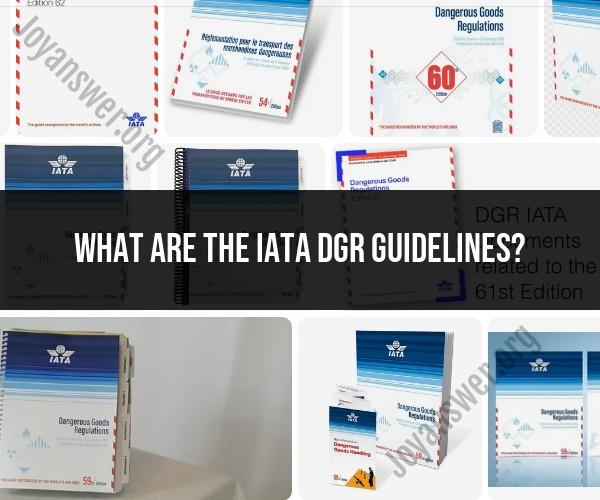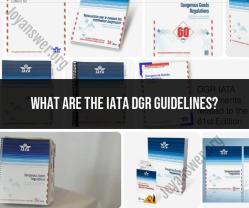What are the IATA DGR guidelines?
The International Air Transport Association (IATA) Dangerous Goods Regulations (DGR) is a comprehensive set of guidelines and regulations that govern the safe transportation of dangerous goods by air. Understanding the guiding principles of the IATA Dangerous Goods Regulations is essential for anyone involved in shipping or handling dangerous goods via air transport. Here are some key principles to keep in mind:
Safety First: The primary goal of the IATA DGR is to ensure the safety of passengers, crew members, and aircraft during the transport of dangerous goods. Safety considerations take precedence over all other factors.
Classification of Dangerous Goods: Dangerous goods are categorized into different classes based on their inherent hazards. These classes include explosives, gases, flammable liquids, flammable solids, oxidizing substances, toxic substances, radioactive materials, corrosive substances, and miscellaneous dangerous goods.
Proper Documentation: Accurate and complete documentation is crucial for the safe transport of dangerous goods. Shippers must provide the necessary information, including the proper shipping name, UN number, hazard class, and packing group, on shipping papers and labels.
Packaging Requirements: Dangerous goods must be packaged in containers that meet specific standards to prevent leaks, spills, and damage during transportation. The packaging must be tested and certified according to relevant regulations.
Marking and Labeling: Packages containing dangerous goods must be marked and labeled with specific hazard labels, including hazard diamonds, to communicate the contents and associated risks to those handling the goods.
Segregation and Compatibility: The IATA DGR provides guidance on the segregation of incompatible dangerous goods to prevent chemical reactions or accidents. Proper segregation ensures that different classes of dangerous goods do not come into contact with each other.
Training and Certification: Personnel involved in the handling, packing, or shipping of dangerous goods must receive appropriate training and certification to ensure they have the necessary knowledge and skills to comply with regulations.
Emergency Response: Proper procedures for responding to emergencies involving dangerous goods, such as spills or leaks, must be in place. This includes having trained personnel and appropriate equipment to address potential incidents.
Security Measures: Security measures are an integral part of dangerous goods transportation. Ensuring that dangerous goods do not fall into the wrong hands is a critical aspect of compliance.
Continuous Updates: The IATA DGR is updated regularly to reflect changes in regulations, scientific knowledge, and industry best practices. It is essential for those involved in dangerous goods transportation to stay current with these updates.
Global Consistency: The IATA DGR is recognized and used worldwide to harmonize the transportation of dangerous goods by air. Consistency in regulations helps ensure safety and compliance across international borders.
Penalties for Non-Compliance: Non-compliance with the IATA DGR can result in significant penalties, fines, legal consequences, and, most importantly, safety hazards. It is the responsibility of shippers, carriers, and all involved parties to adhere to the regulations.
Understanding and following the guiding principles of the IATA Dangerous Goods Regulations is crucial for the safe and compliant transportation of dangerous goods by air. Shippers, carriers, and other stakeholders should invest in training, resources, and compliance measures to ensure the protection of people and the environment.








